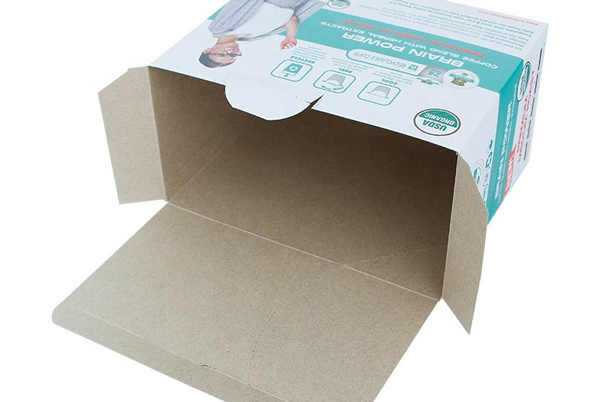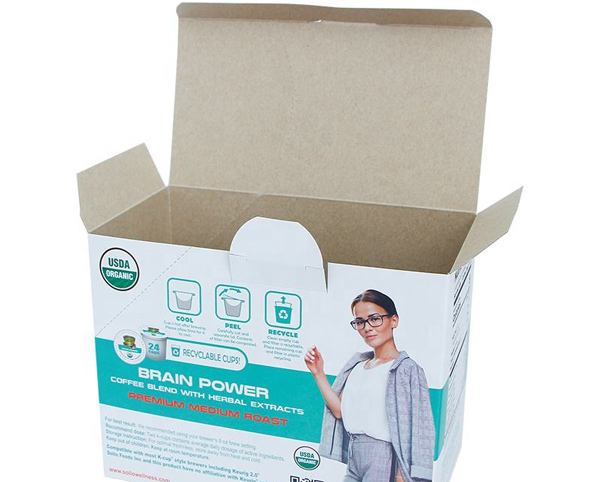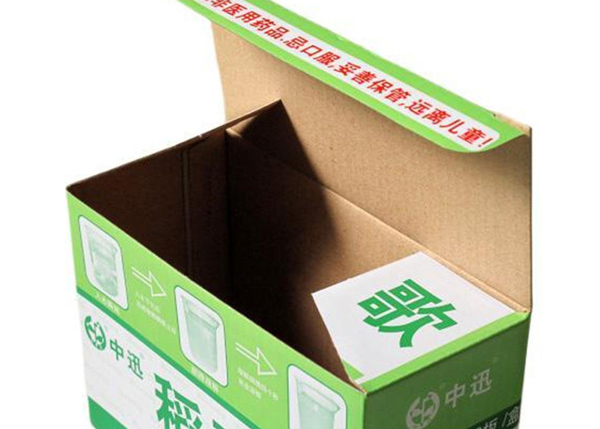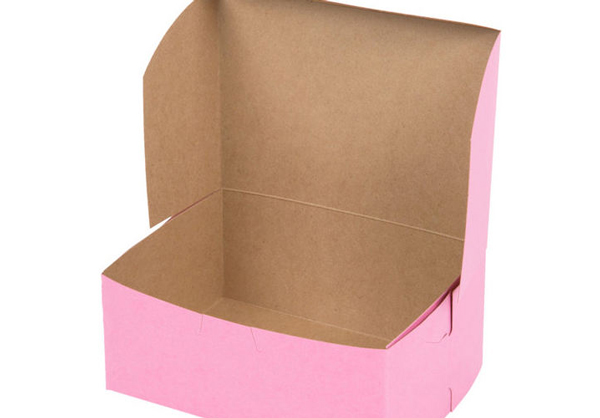Exploring Clay Coated News Back Paper
Clay Coated News Back Paper: Uncovering Its Unique Benefits and Applications
CCNB is short for Clay Coated News Back (duplex paperboard). Clay coated paper intrigues many people due to its unique characteristics and versatile applications. You may have encountered this type of paper in various forms like magazine covers, catalogues, and packaging materials without realizing its distinctive properties. Allow us to guide you through what makes this paper special and how it impacts your day-to-day life.
Derived from a mixture of clay and other materials, this paper provides an ultra-smooth and high-quality surface for printing. You'll notice that it results in vibrant colors and sharp images, thanks to the clay coating that minimizes ink absorption and optimizes ink distribution. Your engagement with visually captivating prints and designs on clay coated paper lends testament to its significance in the paper industry.
As you delve deeper into the world of clay coated news back paper, you'll discover the various forms it can take, including cast coated, machine finished, and machine glazed options. Each type offers unique benefits that cater to different requirements, ensuring that your printing needs are met with accuracy and excellence. Rest assured that whether you require high-gloss packaging or magazine-quality prints, clay coated paper has got you covered.

CCNB Packaging Paper Box
Clay Coated News Back Paper Basics
Composition
Clay coated paper is made of a paper base coated with a thin layer of clay on one or both sides. This clay is typically a mixture of kaolin and other minerals, such as calcium carbonate, which provide a smooth, non-porous surface that improves the appearance of the printed materials you produce. The clay coating also helps to enhance the paper's opacity, brightness, and ink holdout, making it a suitable choice for your high-quality printing projects.
Production Process
The production process for clay coated news back paper begins with the preparation of the paper base. This involves making a pulp from wood fibers, which is then spread out on a paper machine and pressed into a thin sheet. Next, the paper sheet is coated with a mixture of clay, minerals, and binders. This coating can be applied either during the papermaking process (online coating) or after the paper has been produced (offline coating).
During the online coating process, the coating is applied to the wet paper sheet on the paper machine. The sheet then passes through a series of rollers that spread the coating evenly and a drying section that removes moisture, resulting in a consistent and uniform coating layer. Finally, the clay-coated paper is wound onto a large reel for further processing as needed.
In the offline coating process, the paper sheet is first fully dried and then transported to a separate coating machine. There, a coating mixture is applied using various methods such as air knife, blade, or roll coaters. After the coating is applied, it is dried and then subjected to a calendering process to smooth out any imperfections and achieve the desired paper quality. The finished product is then cut and packaged for your use.

Custom Print Clay Coated Packaging Box
Types of Clay Coated Paper
Clay coated paper is popular for its ability to provide high-quality print results. As you explore your options, you'll come across various types of clay coated paper, each with its specific characteristics and uses. In this section, we will discuss three common types: Gloss Coated, Matte Coated, and Silk Coated.
Gloss Coated
When you want rich, vibrant colors and a shiny finish, gloss coated paper is your go-to choice. This type of clay coated paper has a smooth, glossy finish that enhances the appearance of your printed materials. It's ideal for photography, magazines, brochures, and catalogs.
-
Pros: High-quality print results, rich colors, and visually appealing
-
Cons: Can show fingerprints, may be difficult to write on
Matte Coated
Matte coated paper offers a more subdued look, featuring a flat finish that absorbs light. This option is perfect for you if you prefer a non-reflective surface for your printed materials. It's commonly used for business cards, letterheads, and annual reports.
-
Pros: Easy readability, less glare, professional appearance
-
Cons: Colors may appear less vibrant compared to gloss coated paper
Silk Coated
Falling between gloss and matte, silk coated paper provides a smooth, low-sheen finish. If you're looking for a balance between the vibrant colors of gloss and the readability of matte, silk coated paper is an excellent choice for you. This type of paper is suitable for a range of applications, including book covers, posters, and flyers.
-
Pros: Balanced appearance, versatile, resists fingerprints
-
Cons: Slightly less vibrant than gloss options, not as matte as true matte-coated papers
As you decide which type of clay coated paper is right for your project, consider the desired appearance, intended use, and any specific features you require. Each option has its advantages, and understanding the differences between them will help you make an informed decision for your printing needs.

CCNB Corrugated E Flute Packaging Box
Advantages and Disadvantages
Pros
When you use clay-coated paper, you'll experience a remarkable difference in print quality. The clay coating provides a smoother surface for better ink adhesion, enhancing your images' sharpness and resolution. Additionally, the coating delivers a high value of brightness, which gives your printed materials a luxurious look.
Moreover, clay-coated paper is less prone to yellowing or degrading over time, making it a great choice for long-term projects or items you want to keep for a while. Since it is more resistant to moisture and humidity, your materials will be protected from these external factors, resulting in less damage.
The paper's surface characteristics work well with various printing methods such as offset, gravure, and flexography. This versatility allows you to effectively use clay-coated paper for a wide range of applications, from magazine covers to product packaging and marketing materials.
Cons
However, it is essential to be aware of the downsides of using clay-coated paper. One of the primary concerns is the material's higher cost compared to uncoated paper. You might need to budget more for this type of paper, especially if you require large quantities or print runs.
Environmental factors may also be a consideration when deciding on clay-coated paper. The process of coating the paper consumes more energy and resources than uncoated paper production. You may want to weigh the environmental impact before using clay-coated paper for your projects.
Lastly, keep in mind that clay-coated paper can be challenging to recycle due to the coating layer. This issue can affect your company's sustainability initiatives if you value supporting eco-friendly measures.

Clay Coated News Back Paper/ CCNB
Applications and Uses
Printing Industry
In the printing industry, clay coated paper serves many purposes. You'll find it's ideal for high-quality printing due to its smooth, non-porous surface which enhances the sharpness and vividness of printed images. Common applications include:
-
Brochures: The high-resolution and bright colors achievable on clay coated paper make your marketing materials stand out.
-
Catalogs and Magazines: The aesthetic and practical benefits of clay coated paper enhance reader experience – giving your publication a polished look and feel.
-
Business Cards and Posters: Thicker, cardstock or board versions of clay coated paper lend your promotional materials extra durability and a professional feel.
Packaging Industry
In the packaging industry, clay coated paper offers a cost-effective and eco-friendly option. The paper is lightweight and easy to fold, making it ideal for various types of packaging:
-
Food Packaging: Your consumers will appreciate the hygienic, grease-resistant properties of clay coated paper, which helps protect packaged food items from contamination.
-
Pharmaceuticals: Clay coated paper's smooth surface allows for easy gluing and closure, keeping medications securely contained.
-
Retail Packaging: Impress your customers with the high-quality look and feel of clay coated paper. They'll appreciate how easy it is to open packages without causing damage to the contents.
Remember to consider clay coated news back paper as a versatile and practical choice in both the printing and packaging industries. The properties of this paper type make it suitable for various applications, ensuring your project stands out for the right reasons.
Environmental Impact and Sustainability
Recycling
When it comes to recycling, clay-coated paper is more challenging to recycle than uncoated paper due to the clay coating. You may find that not all recycling facilities accept this material. To ensure this type of paper is handled responsibly, you should take care to properly separate it from other recyclables and look for local recycling centers that specifically deal with clay-coated paper.
Alternatives
As a responsible consumer, consider using alternatives that have a lower impact on the environment:
-
Uncoated paper: Choosing uncoated paper is a more straightforward option for recycling, and will reduce your environmental footprint. Uncoated paper is still versatile and can be used for various projects.
-
FSC Certified Paper: This certification ensures that the paper comes from sustainably managed forests, reducing negative impact on the environment. An FSC certified paper can be either coated or uncoated. We are FSC certified cardboard box manufacturer. All packaging boxes & items made by us are eco-friendly and sustainable.
-
Recycled Paper: Opt for paper containing post-consumer waste (PCW) materials to further reduce your environmental impact. This paper is often uncoated and is widely accepted for recycling purposes.
By being mindful of your choices when it comes to clay-coated paper, you can still enjoy its benefits while making a positive impact on the environment. Always recycle when possible and explore alternative options to lessen the environmental impact.

CCNB Packaging Box
Frequently Asked Questions
1. What are the main applications of clay coated paper?
Clay coated paper has versatile applications, including high-end magazines, brochures, catalogs, posters, and packaging. Its smooth surface provides optimal print quality, making it an ideal choice for projects that require sharp images and vibrant colors.
2. How does clay coating affect paper quality?
Clay coating enhances the paper's surface, providing a smoother and more uniform texture. This allows for better ink adhesion and consistent color reproduction. Additionally, the coating prevents ink from absorbing into the paper fibers, resulting in sharper images and reduced ink consumption.
3. How do clay coated papers differ from other coated papers?
Clay coated papers use a layer of refined, clay-based minerals (usually kaolin) to achieve their smooth surface. Other coated papers may use different types of minerals, chemicals, or binders that can affect the paper's overall look, feel, and performance. Thus, the main difference is in the composition of the coating used.
4. Is clay coated news back (CCNB) paper environmentally friendly?
Clay coated paper is recyclable, so it contributes to reducing waste. However, the manufacturing process can be resource-intensive, requiring significant amounts of water and energy. It's essential to consider factors such as sourcing materials from responsible suppliers and recycling practices when evaluating the environmental impact of any paper product.
5. What are the advantages of using clay coated paper for printing?
Clay coated paper offers considerable benefits for printing, including:
-
Improved print quality: Its smooth surface allows for better ink absorption and color brightness.
-
Reduced ink consumption: Its non-absorbent surface prevents ink from seeping into the paper fibers.
-
Increased durability: The coating adds a level of protection against moisture, fingerprints, and other environmental factors that can damage your printed materials.
-
Enhanced visual appeal: The professional finish and appearance of clay coated paper can elevate your project to a higher level of sophistication.
6. What role does kaolin play in clay coating paper?
Kaolin, a type of clay, is the primary component used in clay coatings for paper. It offers a fine, white pigment that contributes to the paper's smoothness, brightness, and opacity. Kaolin improves the paper's printing performance by providing a uniform and consistent base for ink. This results in sharper images, better color reproduction, and overall enhanced print quality.




